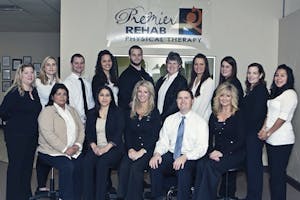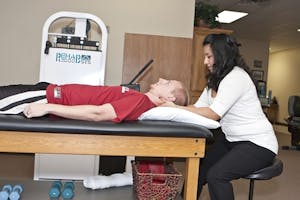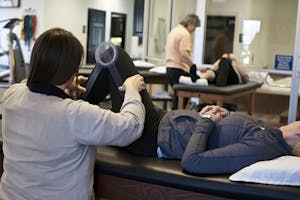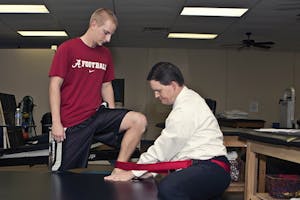Facts About Therapy
WHO WE ARE. Physical therapists are licensed health care professionals who diagnose and manage movement dysfunction and enhance physical and functional limitations, and disabilities or other health-related conditions, physical therapists design individualized plans of physical therapy care and services for each patient. Choosing from a broad array of physical therapy interventions, PTs alleviate impairments and functional limitations as well as promote and maintain optimal fitness, physical function, and quality of life as it relates to movement and health. PTs also implement services to reduce risk and prevent the onset and progression of impairments, functional limitations, and disabilities that may result from injury, diseases, disorders, and other health conditions.
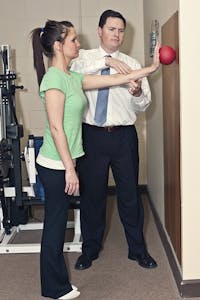
WHAT WE DO. Physical therapists provide care to people of all ages who have functional problems resulting from, for example, back and neck injuries, sprains/strains and fractures, arthritis, burns, amputations, stroke, multiple sclerosis, birth defects such as cerebral palsy and spina bifida, and injuries related to work and sports. However, at Premier Rehab Physical Therapy, we specialize in orthopedic injuries. Physical therapy care and services are provided by physical therapists and physical therapist assistants who work under the direction and supervision of a physical therapist. Physical therapists evaluate and diagnose movement dysfunction and use interventions to treat patient/clients. These may include therapeutic exercise, functional training, manual therapy techniques, assistive and adaptive devices and equipment, and physical agents and electrotherapeutic modalities.
What to Expect from a Physical Therapist
- Evidence-Based Treatment to Meet Your Needs. Physical therapists combine extensive education, clinical experience, and the latest research to create treatment plans tailored to a person’s specific needs and goals. More and more physical therapists are now graduating with a Doctor of Physical>
- Care Across the Lifespan.Physical therapists care for people of all ages and abilities. They diagnose and treat existing health conditions, but they also provide patient education, customize plans of care, and preventative treatments that can help people avoid many health problems before they occur>
- Accessibility.You can see a physical therapist almost anywhere, including hospitals, private practices, outpatient clinics, people’s homes, schools, sports and fitness facilities, work settings, and nursing homes. You do not need a physician’s referral to make an appointment with a physical therapist for an evaluation>
About Physical Therapists (PTs) and Physical Therapist Assistants (PTAs)
Physical therapists are movement experts who treat people of all ages and abilities, helping them improve and maintain function and quality of life. Physical therapists create individual treatment plans to match each person’s goals, helping people improve their fitness and function, avoid surgery, reduce the use of opioids and other drugs, and partner in their own care.

WHERE WE PRACTICE. Physical therapists practice in hospitals, outpatient clinics or offices; inpatient rehabilitation facilities; skilled nursing, extended care, or sub-acute facilities; patients’ homes; education or research centers; schools; hospices; industrial workplaces or other occupational environments; fitness centers; and sports training facilities.
EDUCATION AND LICENSURE. The minimum educational requirement to become a physical therapist is a post-baccalaureate degree from an accredited education program. While many school have offered Masters programs in the past, all physical therapy schools now require a Doctor of Physical Therapy (DPT) degree. After graduation, candidates must pass a state-administered national examination for licensure. State licensure is required in each state in which a physical therapist practices.
AMERICAN PHYSICAL THERAPY ASSOCIATION. The American Physical Therapy (APTA) is a national professional organization representing 65,000 physical therapists, physical therapist assistants and students throughout the United States. The Association’s efforts are directed toward serving its members and the public by increasing the understanding of the physical therapist’s role in the nation’s health care system and by fostering advancements in physical therapy education, practice and research.

